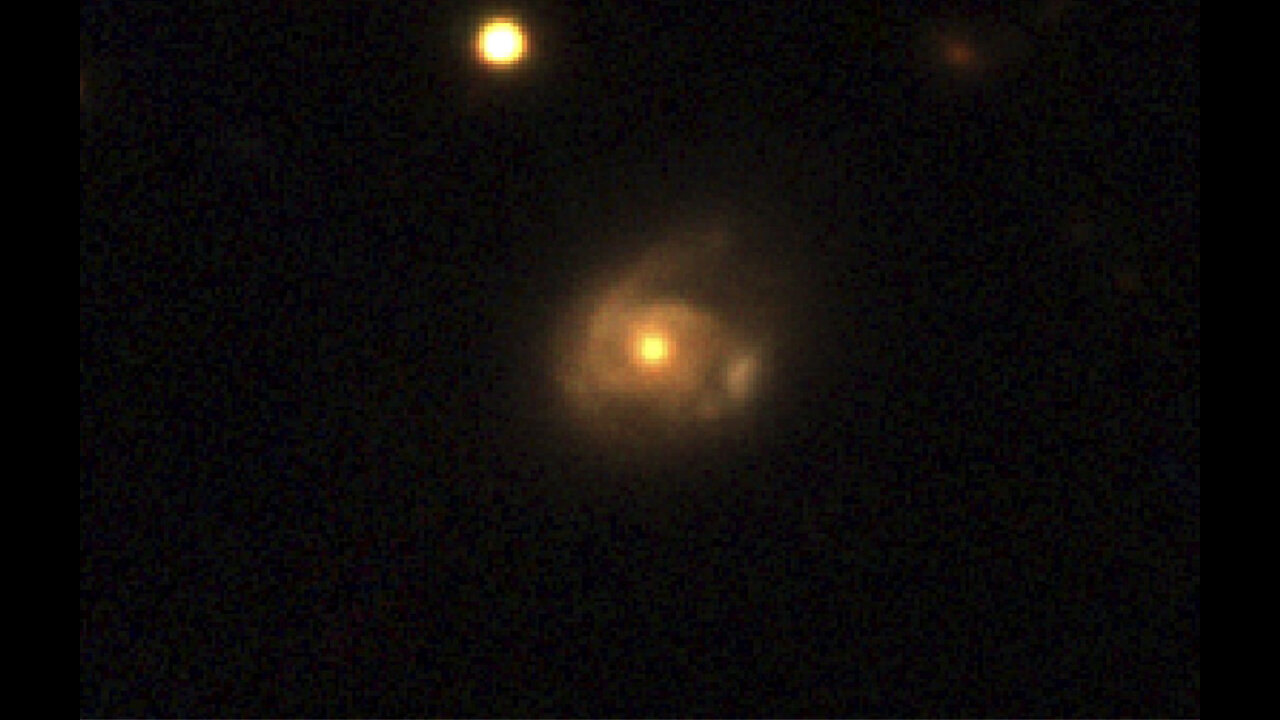Premium Only Content

| Swift Spots | a Snacking | Black Hole | Using a | New Trick |
Using NASA’s Neil Gehrels Swift Observatory, which launched in 2004, scientists have discovered a black hole in a distant galaxy repeatedly nibbling on a Sun-like star. The object heralds a new era of Swift science made possible by a novel method for analyzing data from the satellite’s X-ray Telescope (XRT).
When a star strays too close to a monster black hole, gravitational forces create intense tides that break the star apart into a stream of gas. The leading edge swings around the black hole, and the trailing edge escapes the system. These destructive episodes are called tidal disruption events. Astronomers see them as flares of multiwavelength light created when the debris collides with a disk of material already orbiting the black hole.
Recently, astronomers have been investigating variations on this phenomena, which they call partial or repeating tidal disruptions.
During these events, every time an orbiting star passes close to a black hole, the star bulges outward and sheds material, but survives. The process repeats until the star loses too much gas and finally breaks apart. The characteristics of the individual star and black hole system determine what kind of emission scientists observe, creating a wide array of behaviors to categorize.
On June 22, 2022, the XRT captured Swift J0230 for the first time. It lit up in a galaxy around 500 million light-years away in the northern constellation Triangulum. Swift’s XRT has observed nine additional outbursts from the same location roughly every few weeks.
Scientists propose that Swift J0230 is a repeating tidal disruption of a Sun-like star orbiting a black hole with over 200,000 times the Sun’s mass. They estimate the star loses around three Earth masses of material on each pass. This system provides a bridge between other types of suspected repeating disruptions and allowed scientists to model how interactions between different star types and black hole sizes affect what we observe.
Swift J0230’s discovery was possible thanks to a new, automated search of XRT observations called the Swift X-ray Transient Detector.
After the instrument observes a portion of the sky, the data is transmitted to the ground, and the program compares it to previous XRT snapshots of the same spot. If that portion of the X-ray sky has changed, scientists get an alert. In the case of Swift J0230, astronomers were able to rapidly coordinate additional observations of the region.
-
 13:19
13:19
The Pascal Show
16 hours agoCOMEBACK DERAILED! Jimmy Kimmel's Return To Late Night Hit After ABC Affiliates REFUSE To Air Show
1.14K2 -
 LIVE
LIVE
Lofi Girl
2 years agoSynthwave Radio 🌌 - beats to chill/game to
190 watching -
 2:17:05
2:17:05
FreshandFit
4 hours agoFrom SMALLVILLE to AB'SVILLE w/ Sam Jones III
118K4 -
 3:05:45
3:05:45
Price of Reason
10 hours agoTrump's UN Takedown! BACKLASH Over Disney's Jimmy Kimmel Return! Tulsa King Season 3 Premiere Review
119K16 -
 3:03:12
3:03:12
Badlands Media
12 hours agoDEFCON ZERQ Ep. 010: Government Overreach and the Battle for Freedom
162K56 -
 9:46
9:46
Levi
1 day agoWhy XRP's Bull Run Will Be 10x Bigger Than The Last One - Raoul Pal
7.92K1 -
 20:13
20:13
Paul Barron Network
26 days ago $0.39 earnedXRP Vault Yields Coming in September!?🔥Flare CEO INTERVIEW
9.09K -
 3:00:12
3:00:12
TimcastIRL
7 hours agoJimmy Kimmel Show IN CHAOS Before Return, Affiliates REFUSE, Staff Says THEYLL QUIT
360K107 -
 2:49:26
2:49:26
Laura Loomer
7 hours agoEP145: Trump Makes BOMBSHELL Autism Announcement
51.9K19 -
 6:14:04
6:14:04
SpartakusLIVE
8 hours agoEXPLOSIVE $400+ 2v2 Tuesday has viewers GLUED to the screen
59.7K2